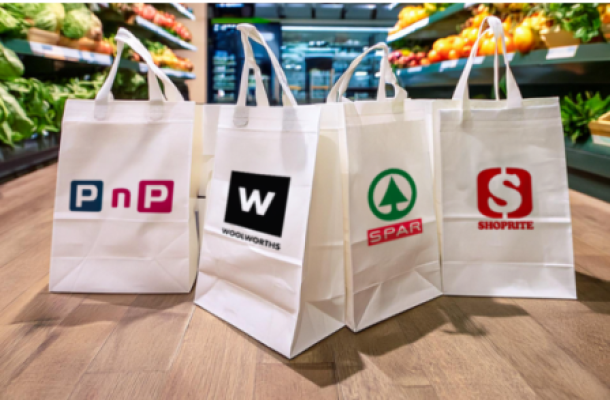Bigger not always better
South Africa is undergoing a retail evolution where mass-market one-size-fits-all strategies no longer cut it, and bigger retail stores are not perceived as better by local consumers. These key insights stem from a recent Nielsen Global Retail Growth Strategy Report that highlights the need for innovative tactics in the retail landscape.
“As lifestyle and consumption habits change, we are seeing a structural shift with small formats showing big growth. This stems from the fact that where the small store has reinvented itself, the hypermarket has remained more or less the same over the last three decades. As a result, small stores are able to meet the current consumer need for a higher level of specialisation and service delivery since an artisanal feel, personal service and individualism are synonymous with this store format,” says Craig Henry, Nielsen MD Retailer Vertical Africa-Middle East.
In addition, South African consumers reveals that when selecting a store, their choices are highly influenced by convenience of location (71%), ease and speed, determined by quick in and out (61%), high-quality fresh produce (71%) and product availability (68%) over that of price-related attributes such as lowest prices overall (56%) and great sales and promotions (56%).
The myth of bigger is better
When it comes to the fortunes of large retail outlets they previously benefitted from scale driving down unit cost and raising return on investment (ROI); they were better for suppliers too, who benefited from greater shelf space to deploy brand and category portfolio strategies; and were better for consumers, who gained access to greater assortment, better prices and convenient one-stop shopping.
Over the past 10 to 15 years, however, the modern retail store model has evolved. Supply-chain process improvements have made it possible to achieve similar or even higher levels of profitability with smaller stores, paving the way for smaller retail outlets to expand and take share from larger competitors in many markets. The result is that today’s retail environment is more fragmented than ever with fierce competition for shoppers leading to an increasing dependency on promotions among large retailers.
Since retailers and manufacturers have a shared reliance on promotions, knowing which categories are more or less sensitive to pricing changes is essential for breaking the current promotion addiction and driving future growth. Not surprisingly, discretionary categories, such as convenience foods, snacks and alcoholic beverages, are more sensitive to price increases than staple products such as dairy, fresh foods and personal-care products.
If prices were to increase by 10%, South African consumers surveyed said they would continue their current buying habits (same quantity at the higher price) for dairy (46%), meat and poultry (42%), bread and bakery (46%), fresh and frozen fruit and vegetables (39%) and personal-care products (44%). However, consumers were prepared to cut back on or stop purchasing altogether on discretionary items such as alcohol (84%), prepared foods (87%), carbonated beverages (86%), crisps and snack foods (85%) and sweets and biscuits (88%). For the most part, however, consumers are not cutting out categories altogether. Rather, they are simply buying less and it is clear that consumers do not want to compromise on quality, with only 5% of South African respondents saying they would sacrifice quality to keep the same price.
Health and wellness is a top priority for consumers around the world, with 67% of global respondents saying they actively seek products with healthy ingredients; however, health and wellness is not just a nice-to-have benefit for local consumers either; South Africans lag the global figure at 58% in terms of priority. While consumers say they read nutritional labels carefully, as much as 44% of local respondents report that there are not enough healthy options to buy in store.
Filling pockets of unsatisfied demand
For many, grocery shopping is something they try to spend as little time as possible doing. Perhaps the biggest pain point for South African consumers is that 47% think retailers do not understand or deliver on their needs. Less than half of South African respondents (47%) believe their main grocery retailer always or mostly communicates with them in a relevant way and provide offers they like and value (56%)
Quality prepared-meal options and in-store dining experiences can be a key differentiator for where consumers decide to shop and as the role of the physical store evolves, in-store add-on services may drive satisfaction and visits. For South Africans, in-store banking (57%), fast food (53%), prepared food (49%) and pharmacy (69%) are the most widely available and used in-store services, with more options they would use, such as petrol filling stations (27%), cooking classes (26%), postal services (25%) and coffee services (19%), should they be made available.
The way for retailers to stay relevant and connected to ever-changing consumer demand is to continuously listen, learn and adapt to provide the products and services that will keep consumers satisfied and coming back time after time. Not all in-store services are equally valued, so understanding where there are pockets of unsatisfied demand could help build the services that consumers want.
Future strategies to meet and exceed new market expectations
Those retailers wanting to adapt to shifting demographics can start by looking at the demographic and socio-economic trends affecting the retail landscape. The shop of the future should be a reflection of the shopper of the future, and demographic shifts are shaping consumer preferences. By 2050, urbanisation, which typically drives consumption, will see two thirds of the world’s population living in urban areas, from just 54% in 2014. This will have major implications for retailers in the future with regard to store location, store footprint and omni-channel strategies.
Another important consideration is Millennials (born between 1981 and 1995) who make up 24% of today’s global population. Their use of technology sets them apart and also needs consideration. Growing up with the internet, social media and mobile as the norm, Millennials have different expectations, attitudes and behaviours than their older counterparts, so understanding their needs and demands is critical to retailers’ health and growth.
How can retailers stay ahead in the rapidly changing landscape? They can start by assessing how well they’re doing now. What their consumers think about their shopping experience, and how well do they think their needs are currently being met. Big data has enormous implications for marketers, but its potential goes beyond providing relevant ads and offers. It has the power to help retailers solve their biggest business problems and identify promising opportunities.
News Category
- International retailers
- On the move
- Awards and achievements
- Legislation
- Wine and liquor
- Africa
- Going green
- Supplier news
- Research tools
- Retailer trading results
- Supply chain
- Innovation and technology
- Economic factors
- Crime and security
- Store Openings
- Marketing and Promotions
- Social Responsibility
- Brand Press Office
Related Articles

Checkers Sixty60 wipes floor with Pick n Pay As...

Top tips for consumers to combat escalating ele...

Clear winner in South African retail battle

Drinks survey reveals Rooibos as a top choice a...


